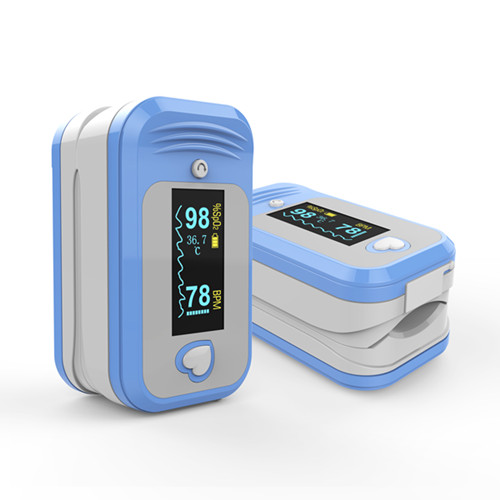In the recent pneumonia epidemic caused by the COVID-19, more people have realized the medical term blood oxygen saturation. SpO2 is an important clinical parameter and the basis for detecting whether the human body is hypoxic. At present, it has become an important indicator for monitoring the severity of the disease.
What is blood oxygen?
Blood oxygen is the oxygen in the blood. Human blood carries oxygen through the combination of red blood cells and oxygen. The normal oxygen content is more than 95%. The higher the oxygen content in the blood, the better the human metabolism. But the blood oxygen in the human body has a certain degree of saturation, too low will cause insufficient oxygen supply in the body, and too high will also cause the aging of the cells in the body. Blood oxygen saturation is an important parameter that reflects whether the respiratory and circulatory function is normal, and it is also an important indicator for the observation of respiratory diseases.
What is the normal blood oxygen value?
① Between 95% and 100%, it is a normal state.
② Between 90% and 95%. Belong to mild hypoxia.
③ Less than 90% is severe hypoxia, treat as soon as possible.
Normal human arterial SpO2 is 98%, and venous blood is 75%. It is generally believed that the saturation should not be less than 94% normally, and the oxygen supply is insufficient if the saturation is below 94%.
Why does the COVID-19 cause low SpO2?
COVID-19 infection of the respiratory system usually causes an inflammatory response. If the COVID-19 affects the alveoli, it can lead to hypoxemia. In the initial stage of the COVID-19 attacking the alveoli, the lesions showed the performance of interstitial pneumonia. The clinical characteristics of patients with interstitial pneumonia are that the dyspnea is not prominent at rest and worsens after exercise. CO2 retention is often a chemical stimulus factor that causes dyspnea, and the interstitial pneumonia Patients with sexual pneumonia generally do not have CO2 retention. This may be the reason why patients with Novel Coronavirus Pneumonia only have hypoxemia and do not feel strong breathing difficulties in the resting state.
Most people with Novel Coronavirus Pneumonia still have fever, and only a few people may not have fever. Therefore, it cannot be said that SpO2 is more judgmental than fever. However, it is very important to identify patients with hypoxemia early. New type of Novel Coronavirus Pneumonia The initial symptoms are not obvious, but the progress is very fast. The change that can be diagnosed clinically on scientific basis is a sudden drop in blood oxygen concentration. If patients with severe hypoxemia are not monitored and found in time, it may delay the best time for patients to see a doctor and treat them, increase the difficulty of treatment and increase the mortality rate of patients.
How to monitor SpO2 at home
At present, the domestic epidemic is still spreading, and disease prevention is the top priority, which is of great benefit to early detection, early diagnosis, and early treatment of various diseases. Therefore, community residents can bring their own finger pulse SpO2 monitors when conditions permit, especially those with respiratory system, cardiovascular and cerebrovascular basic diseases, chronic diseases, and weakened immune systems. Regularly monitor SpO2 at home, and if the results are abnormal,go to the hospital in time.
The threat of Novel Coronavirus Pneumonia to human health and life continues to exist. In order to prevent and control the Novel Coronavirus Pneumonia epidemic to the greatest extent, early identification is the first and most important step. Shenzhen Med-link Electronics Tech Co., Ltd developed a Temperature Pulse Oximeter, which can accurately measure under low perfusion jitter, and can realize five major functions of health detection: body temperature, SpO2, perfusion index, pulse rate, and pulse. Photoplethysmography wave.
Medlinket Temperature Pulse Oximeter uses a rotatable OLED display with nine screen rotation directions for easy reading. At the same time, the screen brightness can be adjusted, and the readings are clearer when used in different lighting environments. You can set blood oxygen saturation, pulse rate, upper and lower limits of body temperature, and remind you to pay attention to your health at any time. It can be connected to different blood oxygen probes, suitable for adults, children, babies, newborns and other people. It can be connected with smart Bluetooth, one-key sharing, and can be connected to mobile phones and PCs, which can meet the remote monitoring of family members or hospitals.
We believe that we will be able to defeat the COVID-19, and hope that the epidemic of this war will disappear as soon as possible, and we hope that China will see the sky again as soon as possible. Go China!
Post time: Aug-24-2021

